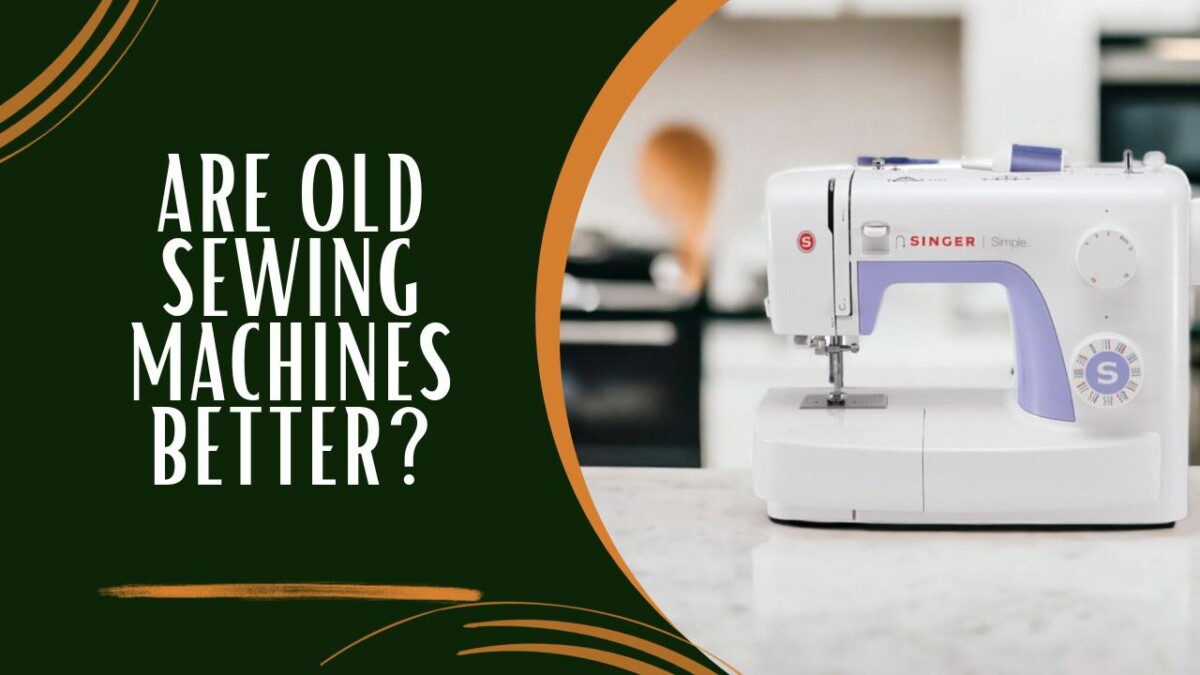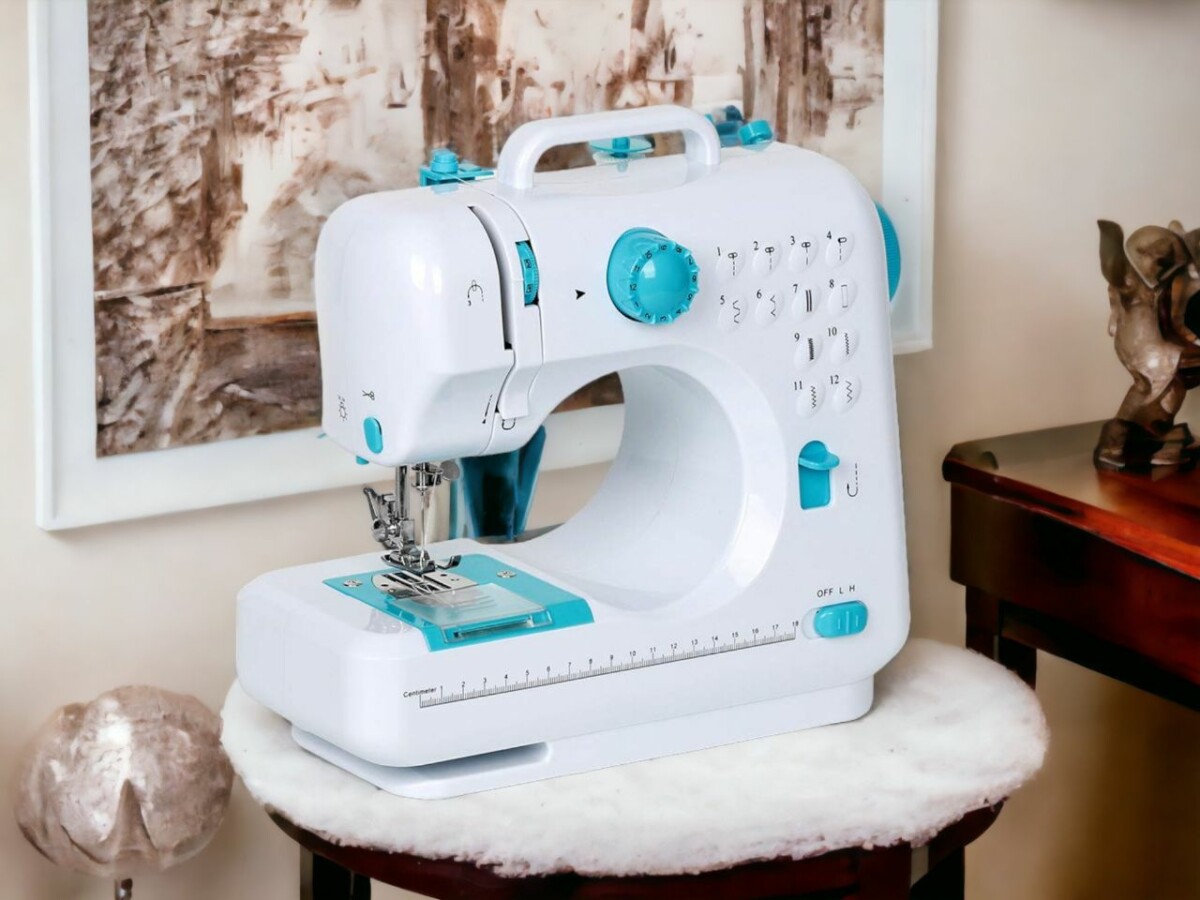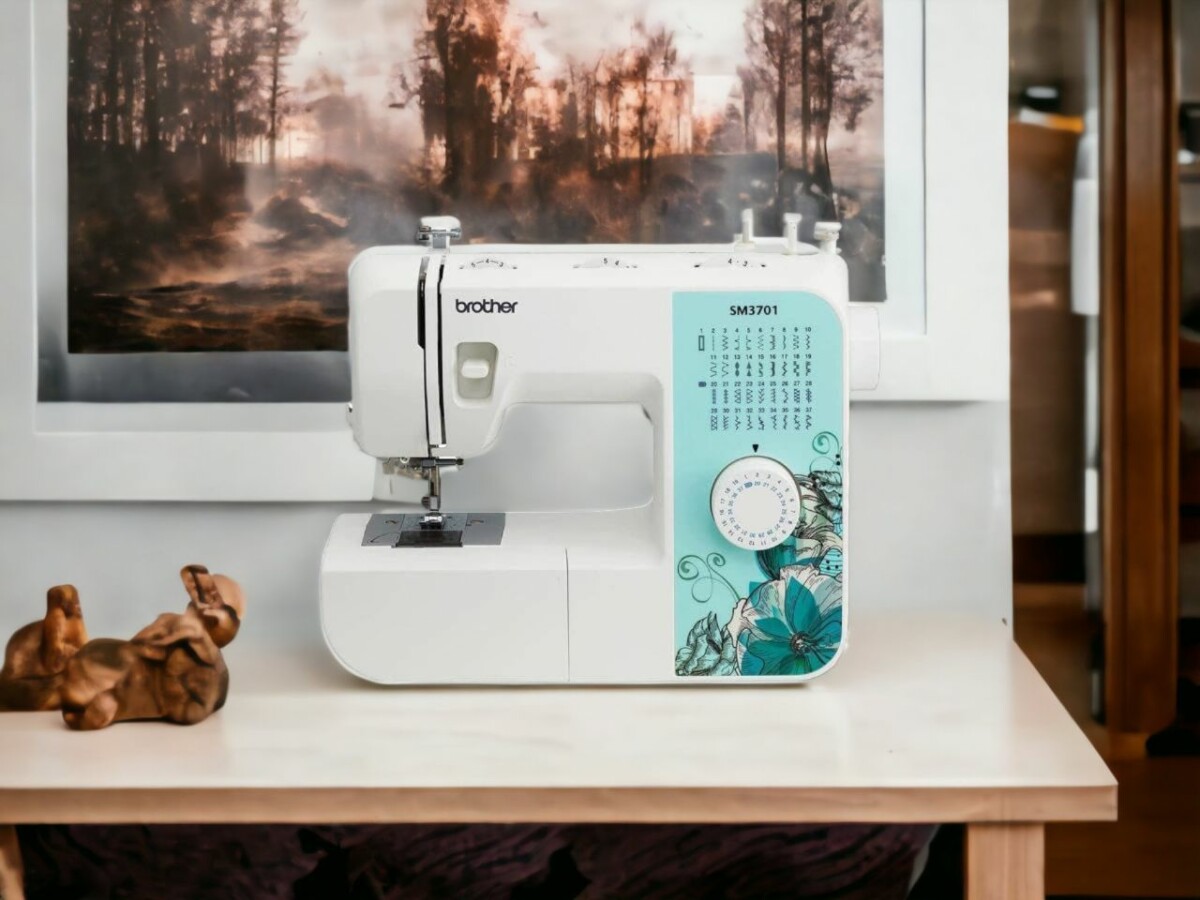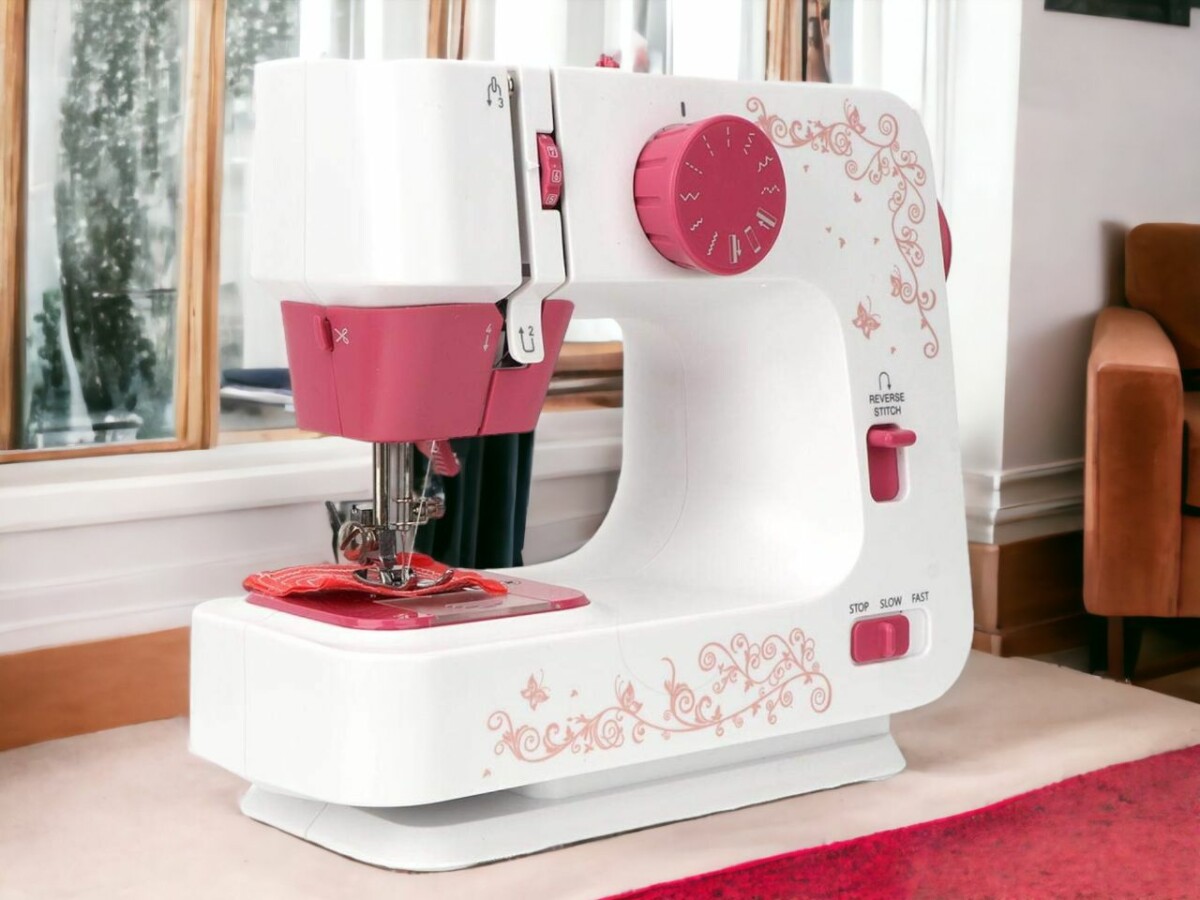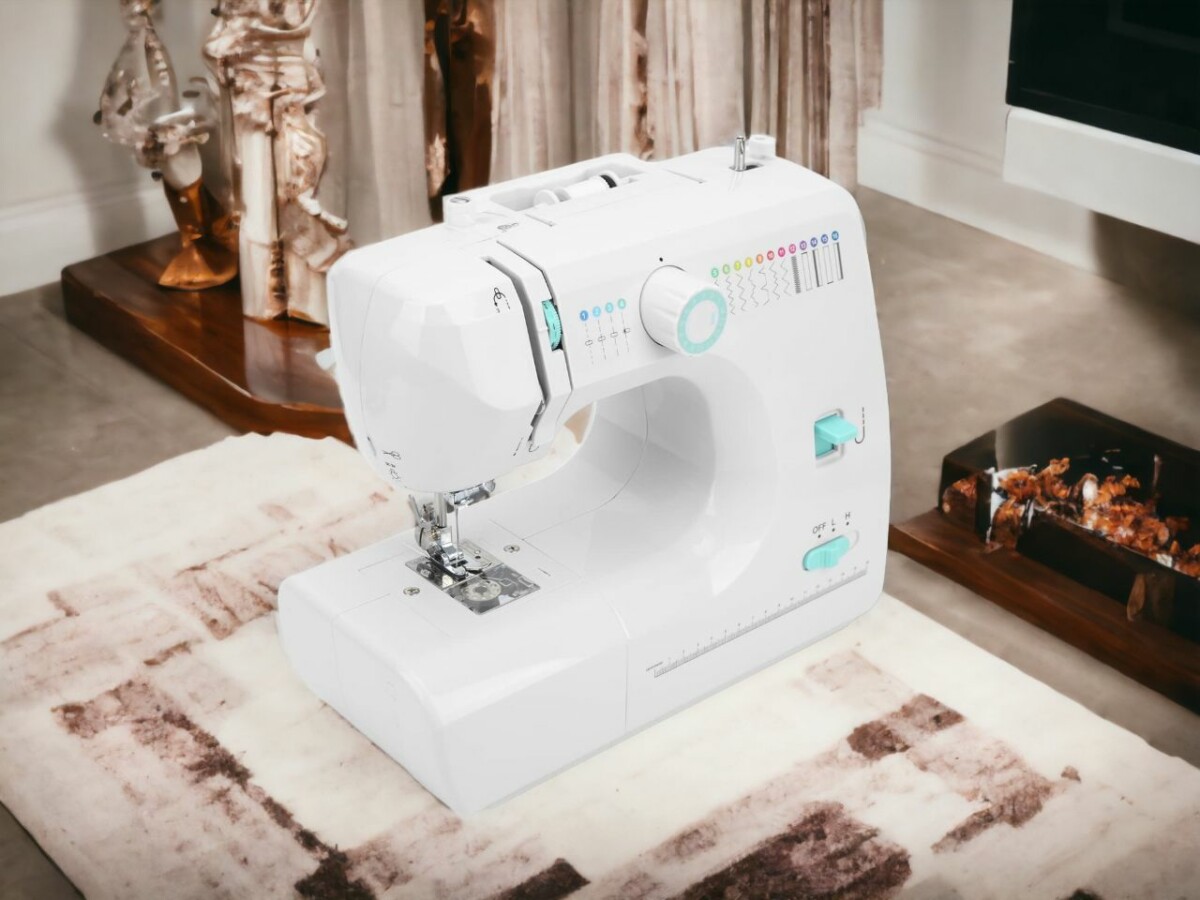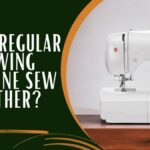When it comes to sewing, the ongoing smackdown between old-school and modern machines is as classic as the craft itself. Your grandmother’s sewing machine, with its cast iron body and complex detailing, stirs up some heavy nostalgia of days gone by. But then, here come the tech-smart, new-gen machines, flexing their advanced features and digital precision. The question is, does old school still rule the roost?
To really get into the heart of this face-off, we need to dig into how these machines function, how long they can survive the test of time and the magic they weave into the artistry of sewing. So, let’s unravel the layers of this debate and see if those age-old sewing machines still hold an ace up their sleeve against the shiny newbies.
Do Old Sewing Machines Score Better?
There’s a charm to old sewing machines, often revered for their hardiness and craftsmanship. Nonetheless, they might not offer the advanced features contemporary machines do. For many, the charm lies in their simplicity and the nostalgia they bring to the table. Yet, it’s crucial to ensure they’re in a workable condition.
When sizing up the durability of old school sewing machines, you’ll discover that a fair few, particularly those hailing from the 60s, are frequently applauded for their rock-solid build and longevity. These retro gadgets have their own unique allure, usually coming with metal gears that guarantee performance for the long haul. Plus sides of these vintage sewing machines include their straightforward functionality and dependability, making them the ideal companion for your essential sewing needs.
Contrastingly, modern computerized sewing machines pack in a bunch of nifty features like auto-threading, a variety of stitch designs, and precision control. That being said, they’re not all sunshine and rainbows – they can be a bit of a headache when it comes to repairs or sourcing replacement parts. So, before you commit to either, it’s super important to weigh up the pros and cons, taking into account your sewing requirements and skill level.
The Drawbacks of Modern Sewing Machines
Sure, the bells and whistles of modern sewing machines might seem super appealing at first glance, but let’s not gloss over the potential hiccups they can throw your way. If your machine bites the dust, getting it fixed can turn into a total nightmare, especially if the model’s been discontinued. And good luck hunting down those elusive replacement parts!
Also, a quick word of caution about those bargain bin models. The build quality can be seriously lacking — we’re talking real durability issues here, thanks to subpar materials and flimsy plastic exteriors. You’re likely to get what you pay for, and in this case, it mightn’t be much.
Modern Machines’ Repair Challenges
So, here’s the thing. Modern, computerized sewing machines are super cool and all, but they can be a real pain when it comes to fixing them.
First up, let’s talk about getting spare parts. Say your machine decides to throw a tantrum and a part needs replacing – it can be a real mission trying to hunt down exactly what you need. This is especially true if your model is old-school and isn’t made anymore.
Next, let’s address the elephant in the room – the cost. The parts for these high-tech machines can seriously dent your wallet. You might find yourself shelling out quite a bit just to get your sewing machine back up and running.
Thirdly, you’ve got to be somewhat of a tech wizard to deal with these machines. They’re not your grandma’s old pedal-powered Singer, that’s for sure. You’ll need some specialized knowledge and tools to tackle them.
And finally, there’s the issue of reliability. With these machines, it can sometimes feel like if it’s not one thing, it’s another. Constantly dealing with issues can make you question whether they’re really worth the hassle.
But hey, it’s not all doom and gloom. It’s about weighing up the good with the bad. Your choice will come down to what you need from your sewing machine, how much you’re willing to spend, and whether you’re cool with dealing with the high-tech stuff.
Quality of Budget Machines
So, here’s the scoop. You might be swayed by the appealing price tags on budget machines, but don’t let that fool you. The truth is, they often don’t pack the same punch in terms of quality and longevity as their pricier counterparts. Sure, they’re easier on your wallet initially, but you might be trading off quality and sturdiness.
Imagine this: plastic components taking the place of sturdy metal ones. Doesn’t sound too reassuring, right? That’s because it often leads to a need for more regular fixes. Not exactly ideal.
Now, let’s talk about high-end machines for a sec. These bad boys are generally kitted out with more advanced features and are built to last. They’re designed to handle more complex sewing techniques and are truly in for the long haul.
So, while budget machines come across as a quick fix for your pocket, they might end up costing you more down the line with potential repair or replacement costs. It’s a classic case of ‘you get what you pay for’.
Comparing Old and New Sewing Machines
Ever thought about the old-school sewing machines and how they measure up against the shiny new ones?
Let’s get real, one of the main things we care about is how long these bad boys are going to last. This usually comes down to what they’re made of. Like, the vintage machines were built with solid metal gears that could take a beating, whereas these modern ones? They’re more likely to have gears made from nylon or resin.
But let’s not get it twisted, no matter how old or new your machine is, you gotta show it some TLC regularly if you want it to stay in the game.
Durability: Old Vs New
Looking at the durability game between vintage and modern sewing machines, you’ll see that each player has its own set of pros and cons. Let’s chat about the lifespan of these machines.
The beauty of the oldies is their simplicity, right? They’re like those rugged, old-school rock bands – built tough with metal parts that can seriously take a hit.
Check this out:
- Modern machines are cool and all with their high-tech features, but they often can’t hold a candle to the old-timers when it comes to durability. Why? Well, they’re mostly made out of plastic.
- Vintage machines, on the other hand, are like the classic cars of the sewing world – built with strong metal gears that keep them running for ages.
- Fixing a newer model can be a real headache, especially if they’ve stopped making the parts you need.
- But hey, it’s not all doom and gloom for the newbies. Brands like Janome and Bernina are rocking the scene with their top-notch, durable new machines.
Machine Maintenance Importance
Before we get into the nitty-gritty of machine upkeep, it’s vital to realize that no matter how old your sewing machine is, a regular dose of TLC can seriously extend its lifespan. But here’s the kicker – the type of maintenance needed can vary significantly between vintage and modern models. Let’s not downplay how important regular check-ups are.
Those old-school machines, made with hardcore, usually metallic parts, don’t need constant attention, but when they do, it’s a deep dive. On the flip side, our contemporary machines, packed with all the latest tech and parts, need frequent, but typically easier check-ins.
Just think about the upsides of treating your machine right: smoother running, fewer fix-ups, and it’s gonna last way longer. Never overlook the worth of preventative care. If you’re good to your machine, it’ll return the favor and stick around for the long haul.
Top Brands for New Sewing Machines
Hey there, need a heads up on where to scout for a decent sewing machine? No sweat, we’ve got your back. Check out these four rockstar brands that should totally be on your radar:
- Janome: Think high-tech. These guys are pros at computerized sewing machines, offering all kinds of models that just might be your perfect match.
- Elna: Talk about reliable! These machines are your go-to for both basic stitching and those more complex sewing projects.
- Baby Lock: Easy-peasy and built to last – that’s what you’re getting with a Baby Lock.
- Bernina: Fancy yourself a sewing expert? Bernina is your brand. They deal in high-end machines that are just the ticket for seasoned sewists.
And here’s a pro-tip: Don’t underestimate the power of buying from a local dealer. You’ll get personalized service, the possibility of in-house repairs, and the chance to give your potential machine a test drive before you commit.
Choose smart to make your sewing game strong.
Buying Guide for Vintage Sewing Machines
When it comes to snagging a vintage sewing machine, there are a few things you’ve gotta keep in mind. First up, you’ve got to take a good hard look at the condition. You don’t want to go home with a lemon, right?
Next, you’ve got to get a grasp on the whole vintage sewing machine market. It can be a bit of a rollercoaster ride, with prices going up and down depending on what’s hot and what’s not.
You also need to do your homework on the brand and model. Vintage sewing machines can be real workhorses – built to last and super reliable. But don’t expect them to have all the fancy bells and whistles that new models do.
And speaking of bells and whistles, let’s talk about price. Just because it’s old doesn’t mean it’s going to be a bargain. Vintage means quality, and that often comes with a price tag to match.
Last but not least, have a good think about what you’re actually going to be using it for. If you’re into heavy-duty projects or you just love the old-school vibe, a vintage machine could be just what you’re looking for.
Importance of Maintenance for Sewing Machines
Hey there, so you’ve got a sewing machine that’s running like a dream right now, right? That’s awesome! But don’t let that fool you into thinking you can slack on the upkeep. Regular maintenance is the secret sauce to keeping your machine in tip-top shape. It’s a big deal, so don’t just brush it off.
Let’s break down some must-do’s to keep your machine from croaking:
- Get Rid of the Gunk: Over time, dirt and lint can turn your machine into a hot mess. Keep it clean, and I mean after every single project.
- Keep it Slick: Oil is your machine’s best friend. It’s like a spa treatment for all those moving parts, reducing friction and preventing wear and tear.
- Don’t Skip the Pros: Routine check-ups by professionals are like your machine’s annual doctor’s visit. They’ll ensure your machine stays in prime condition.
- Nip it in the Bud: Small issues can snowball into big problems. So, don’t turn a blind eye to them, act ASAP!
With a little TLC and routine maintenance, your sewing machine, whether it’s vintage or fresh off the shelf, will stay reliable for many more years. After all, who doesn’t want their tools to be in it for the long haul?
Unveiling the Charm of Antiquated Sewing Machinery
As we roll through this sewing journey, it’s essential to note that these incredible machines have evolved. However, before we sign off, let’s delve back into the past and chat about what made those old sewing machines so darn spectacular, shall we? Comparisons to more modern items, like the slick Pfaff Sewing Machine, reveal interesting contrasts. For instance, older machines were built to last – these hulking chunks of metal were created with resilience in mind. Now, don’t take it wrong – Pfaff has its perks. Its advanced technology and versatility are unbeatable. But as they say, functionality doesn’t trump sentiment, and the sentimental value associated with these grandma-made machines is quite something.
Let’s not forget the charm that Sewing Machine Cabinets brought to the table. These storage converters not only housed the machine itself but they were also the go-to place for that spaghetti mess of threads and needles you never know what to do with. Contrary to modern designs where cabinets are mostly universal, each vintage machine had a unique counterpart. Made it much more personal, don’t you think?
Lastly, amidst the talk about classic machines, we can’t ignore the fact that our world is changing. The environment a pretty big deal to the millennial generation. So, it might be useful to hop over and see how our beloved Sewing Machines and Environment are getting along. Spoiler alert, our libration over convenience does have a couple of repercussions.
In conclusion, the nostalgic charm of old sewing machines and the conveniences of modern ones is a fascinating contrast to explore. Makes your mind boggle, doesn’t it? Well, in the meantime, keep those stitches tight and happy sewing!
I graduated from London College of Fashion, and I’ve been working for a Fashion Design company for 10 years. My other hobbies are going to the gym and reading.

